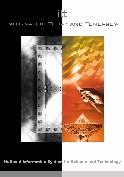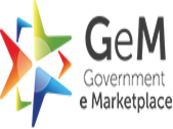
Vol 21 No 1 March 2002
Vimal Kumar Varun
Scientist 'D'
Department of Scientific & Industrial Research
Technology Bhawan, New Mehrauli Road, New Delhi-110016. INDIA
Internet: vkv[at]nic[dot]in URL: http://vkv.tripod.com
ABSTRACT
In the previous issue, the document description resources on International Standard Bibliographic Description for Electronic Resources, International Standard Book Number, International Standard Serial Number and MARC 21 for Bibliographic Data has been discussed. In this issue, some more resources related to document description on MARC, UNIMARC, AACR II, CCF, cataloguing Internet resources, DDML, DCD for XML, document description in HTML, DSD and library & archives terminology are discussed.
KEYWORDS: MARC, UNIMARC, AACR II, CCF, DDML, DCD, DSD, Cataloguing Internet Resources
MARC Forum
http://lcweb.loc.gov/marc/marcforum.htm
The MARC Forum is a moderated electronic discussion forum open to anyone interested in discussing the implementation, maintenance, changes, and development of the MARC 21 formats. It is maintained by the Library of Congress Network Development and MARC Standards Office. The Forum provides the opportunity for members of the information community to participate in discussions related to the formats.The focus of the Forum is on MARC 21 communications format. One can join or leave the Forum by entering email address and name at http://sun8.loc.gov/cgi-bin/wa?SUBED1=marc&A=1. Also one can search or browse the archives at http://listserv.loc.gov/listarch/marc.html.
Other Links
MARC SGML and XML
http://www.loc.gov/marc/marcsgml.html
An implementation of SGML and XML for use with MARC is available along with Conversion Programs and Utilities with Manual. The background and development of MARC DTD is available at
http://lcweb.loc.gov/marc/marcdtd/marcdtdback.html.
MARC Standards
http://www.loc.gov/marc/
Code List of Foreign MARC Sources
http://www.carl.org/tlc/desire/rltr0028.htm
Understanding MARC Bibliographic
http://www.loc.gov/marc/umb/
UNIMARC
http://www.ifla.org/VI/3/p1996-1/sectn1.htm
UNIMARC, an international version of the MARC format, is developed by the IFLA. Its purpose is to facilitate the international exchange of bibliographic data in machine-readable form between national bibliographic agencies. UNIMARC may also be used as a model for the development of new machine-readable bibliographic formats.
The scope of UNIMARC is to specify the content designators (tags, indicators and subfield codes) to be assigned to bibliographic records in machine-readable form and to specify the logical and physical format of the records. It covers monographs, serials, cartographic materials, music, sound recordings, graphics, projected and video materials, rare books and electronic resources.
UNIMARC is intended to be a carrier format for exchange purposes. It does not stipulate the form, content, or record structure of the data within individual systems. UNIMARC does provide recommendations on the form and content of data when it is to be exchanged. UNIMARC is also used by a number of countries such as Croatia, Portugal and Russia
Other Links
UNIMARC Manual: Bibliographic Format 1994
http://ifla.inist.fr/ifla/VI/3/p1996-1/sec-uni.htm
UNIMARC Concise Bibliographic Format
http://opac.bas-net.by/marc-doc/unimarc/concise.htm
Concise UNIMARC Classification Format
http://www.ifla.org/VI/3/p1996-1/concise.htm
Cataloguing Rules and Format Codes
http://www.www.ifla.org/VI/3/p1996-1/appx-h.htm
UNIMARC for your FDT
http://www.unesco.org/webworld/isis/art1999_unimarc.htm
Describes UNIMARC, WINISIS, the Exchange Format, how WINISIS implements these features and UNIBASE.
Contact: Alan Hopkinson at a[dot]hopkinson[at]mdx[dot]ac[dot]uk for more information.
BiblioML - XML for UNIMARC Bibliographic Records
http://www.oasis-open.org/cover/biblioML.htm
The BiblioML DTD is based on the international standard - UNIMARC Bibliographic Format [http://ifla.inist.fr/ifla/VI/3/p1996-1/sec-uni.htm] which can handle the description of all types of documents.The current release of BiblioML handles monographs and serials. A Java/XSLT application to convert UNIMARC records to BiblioML documents with a sample database of over 6000 records is available for free. The details of BiblioML Project is available at http://www.culture.fr/BiblioML.
UNIMARC and Meta Data: Dublin Core
http://www.ifla.org/IV/ifla64/138-161e.htm
Metadata means data about data. UNIMARC itself is a carrier of metadata. UNIMARC was developed for exchanging records between different automated cataloguing systems. Dublin Core is a set of 15 metadata elements intended to facilitate the retrieval of electronic resources. Discusses reasons why two sets of metadata elements are being mapped and problems faced with the mapping.
Contact: Alan Hopkinson at a[dot]hopkinson[at]mdx[dot]ac[dot]uk for more information.
Mapping Dublin Core to UNIMARC
http://www.ukolon.ac.uk/metadata/interoperability/dc_unimarc.htm
A review of META data: A survey of current resources description formats
http://www.ukoln.ac.uk/metadata/desire/overview/rev_17.htm
Anglo-American Cataloguing Rules II
http://www.library.cornell.edu/tsmanual/CIRM/AACR2.html
The Anglo-American Cataloguing Rules, 2d ed., 1988 (AACR2) is used in the preparation of bibliographic records by OCLC participants and most libraries in the United States. Requests for changes in the rules go to the American Library Association, Association for Library Collections and Technical Services (ALCTS), Committee on Cataloging: Description and Access (CC:DA). CC:DA submits proposals for changes in the rules to the Joint Steering Committee for Revision of AACR (JSC). This international body, after appropriate consultation with all countries involved, notifies changes to the rules. The Library of Congress (LC), which also has a representative on the JSC, prepares interpretations of the rules for use by its own cataloguers. These LC rule interpretations (LCRIs) are published quarterly and may be used by cataloguers everywhere. OCLC users are obligated to follow the most recent edition of AACR and its amendments, as well as the LCRIs in the preparation of bibliographic records.
The revision of AACR II is mainly based on the recommendations of the International Conference on Principles and Future Development of AACR held at University of Toronto, Canada during October 23-25, 1997. It was presented by Christine Bobmeyer and his presentation on The Future of Cataloguing Rules is available at http://www.kobv.de/events/00jun/bossmeyer/sld001.htm.
Common Communication Format (CCF)
http://www.acctbief.org/avenir/ccf.htm
This article, by Alan Hokinson, describes the background of the CCF, differences between the CCF and MARC, and requirements of the exchange formats.
Contact: Alan Hopkinson at a[dot]hopkinson[at]mdx[dot]ac[dot]uk for more information.
Catologuing Internet Resources: A Manual and Practical Guide
http://www.oclc.org/oclc/man/9256cat/toc.htm
http://www.library.cornell.edu/tsmanual/CIRM/index.html
The Manual and the guidelines, are prepared with the anticipation that there is a demand at some institutions for bibliographic records for Internet resources which may be made available through online catalogues. The basic premises of the OCLC projects concerning access to Internet resources are:
there is a great deal of valuable information available through the Internet;
these resources need to be organized for accessibility; and
using existing library techniques and procedures and creating records for retrieval through existing online catalogues is the most efficient method of accessing these resources.
It provides details on Guidelines for Bibliographic Description of Internet Resources, The Bibliographic Description, Bibliographic Access, Subject Headings, Examples and Selected Bibliography.
Other Links
Cataloguing Digital Preservation Titles
http://www.library.cornell.edu/tsmanual/Digicat/create.inst.html
Document Defintion Markup Language (DDML) Specification, Version 1.0
http://www.w3.org/TR/NOTE-ddml
It was edited by Ronald Bourret, John Cowan, Ingo Macherius, and Simon St. Laurent and submitted by GMD to World Wide Web Consortium on January 19, 1999. The submission details are available at http://www.w3.org/Submission/1999/01/. DDML was formerly known as XSchema and the differences between DDML and XSchema is available at http://www.w3.org/TR/NOTE-ddml#differences.
This document proposes Document Definition Markup Language (DDML), a schema language for XML documents. DDML encodes the logical (as opposed to physical) content of DTDs in an XML document. This allows schema information to be explored and used with widely available XML tools. DDML is deliberately simple, providing an initial base for implementations. While introducing as few complicating factors as possible, DDML has been designed with future extensions, such as data typing and schema reuse, in mind. It also enlists the DDML Syntax, DDML Namespaces, DDML Documents and DTDs,
Contact: Ronald Bourret (Technical) at rbourret[at]ito[dot]tu-darmstadt[dot]de or Klaus Birkenbihl (Legal) at klaus[dot]birkenbihl[at]gmd[dot]de for inquiries from the public or press about this submission.
Document Content Description for XML
http://www.w3.org/TR/NOTE-dcd
It was edited by Tim Bray, Charles Frankston and Ashok Malhotra and submitted to World Wide Web Consortium on July 31, 1998. The submission details are available at http://www.w3.org/Submission/1998/11/.
This document proposes a structural schema facility, Document Content Description (DCD), for specifying rules covering the structure and content of XML documents. The DCD proposal incorporates a subset of the XML-Data Submission and expresses it in a way which is consistent with the ongoing W3C RDF (Resource Description Framework) effort; in particular, DCD is an RDF vocabulary. DCD is intended to define document constraints in an XML syntax; these constraints may be used in the same fashion as traditional XML DTDs. DCD also provides additional properties, such as basic datatypes.
Contact: David Fallside at fallside[at]us[dot]ibm[dot]com and Thomas Reardon at thomasre[at]microsoft[dot]com for inquiries from the public or press about this submission.
Issues of Document Description in HTML
http://www.oasis-open.org/cover/miller-issues.html
The HTML, an application of SGML, is a simple method for expressing document structure. It has contributed to its popularilty and made Web publishing more accessible but makes it difficult to richly described documents. This desciption is very important now-a-days for effective search and retrieval as more and more networked data becomes available.
This documents describe about the various issues of document descriptions in HTML such as The HTML 2.0 META Element, Current Issues of META Element, Current Document Description and Possible Directions of Document Description. It also describes an hypothetical example of bibliographic inheritance based on records created by the University of Virginia Library's Electronic Text Center.
Contact: Eric J. Miller, Office of Research, OCLC Online Computer Library Center, Inc., Dublin, Ohio for more information.
Document Structure Description
http://www.brics.dk/DSD
Document Structure Description (DSD) is an XML schema language. A DSD docmument is a speciification of a class of XML documents together with a default mechanism and documentation. The DSD notation is defined in the DSD 1.0 Specification at http://www.brics.dk/DSD/specification.html.
DSD provides alternatives to XML DTDs and other XML schema languages. It adds expressive power, increases readability and contains support for default attributes and contents. The relationship between DSDs and XML Schema is descibed at http://www.brics.dk/DSD/schemawg.html. The DSD 1.0 language has been designed by Nils Klarlund, Anders Moller, and Michael I. Schwartzbach. A revised specification, DSD 2.0, is under development.
Contact: DSD at dsd[at]brics[dot]dk for inquiries, comments or questions.
Library & Archives Terminology
http://www.lib.auburn.edu/madd/docs/glossary/
An alphabetical listing of library & archives terminology along with the description is available on this site maintained by the Auburn University Library.
Online Dictionary of Library and Information Science (ODLIS)
http://vax.wcsu.edu/library/odlis.html
ODLIS is created by Ms. Joan M. Reitz, Assistant Professor/Instruction Librarian at the Ruth A. Haas Library, Western Connecticut State University (WCSU) in Danbury, CT. ODLIS is designed to be a hypertext reference resource for library and information science professionals, university students and faculty, and users of all types of libraries.
Contact: Ms. Joan M. Reitz at reitzj[at]wcsu[dot]edu for comments and more information..
USEFUL URLs
Document Description and Data Structures
http://www.iiuf.unifr.ch/~brugger/papers/95_cidre/node4.html
Document Description and Access - New Challenges
http://www.caslin.cz:7777/caslin01/sbornik/hakala.html
Descriptive Standards Information and Documentation
http://www.library.yale.edu/~dsmith/saa/descrip.htm
Attention ITT ReadersThe Internet Edition of ITT, available at http://itt.nissat.tripod.com, comes out much before the publication of its print version. You may also browse the back issues from 1995 onwards.
|
Information Today & Tomorrow, Vol. 21, No. 1, March 2002, p.17-p.20
http://itt.nissat.tripod.com/itt0201/ruoi0201.htm





















